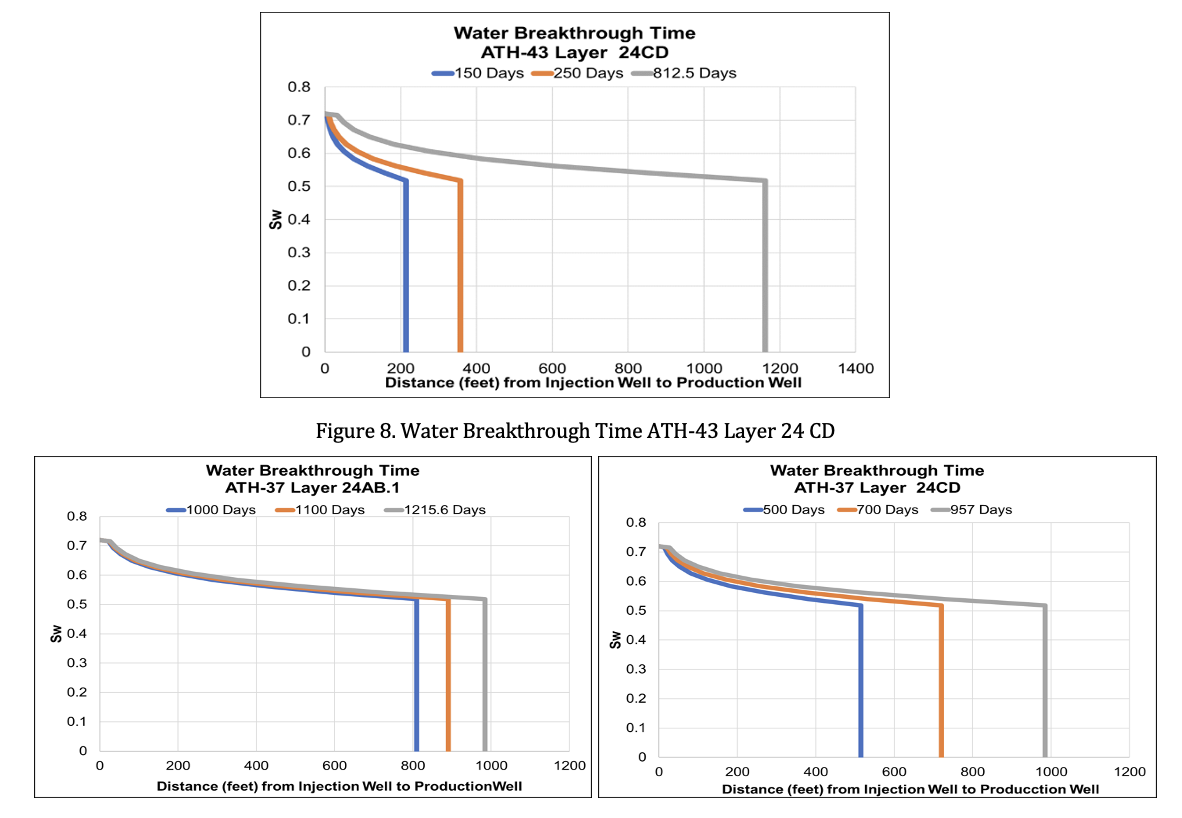Analyze of Water Injection Performance Surveillance in “ATHENA” Field
Abstract
To measure the success of waterflood activities, we need evaluation and analysis. To support evaluation and analysis need to be done assessment of well connectivity to the response of injection wells, performance wells with Hall-plot and Voidage Replacement Ratio and calculate water breakthrough time with method Buckley-Leverett whether according to the actual field. To examine these required supporting data such as field history, production and injection history, fluid level measurement data. The results of the study showed the well ATH-43 less response (poor response) and the well ATH-37 and ATH-33 gave good response (good response) and gain oil obtained by 8,196 barrels. The hall-plot evaluation showed that the well ATH-04 had no formation/normal damage, and the results of the VRR showed the VRR < 1. The results of the calculation of water breakthrough time calculations with actual show the well experiencing breakthrough earlier than the calculation (Premature breakthrough).
Full text article
References
Alida, R., & Juliansyah, O. (2016). ANALISA KINERJA INJEKSI AIR DENGAN METODE VOIDAGE REPLACEMENT RATIO DI PT. PERTAMINA EP ASSET 1 FIELD RAMBA. Jurnal Teknik Patra Akademika, 7(01), 41–48. https://jurnal.pap.ac.id/index.php/JTPA/article/view/29
Andalucia, S., Fachri, & Al Hafidz, A. (2016). Analisis Hall Plot Untuk Mengidentifikasi Formation Damage Dan Performance Injeksi Pada Kegiatan Waterflooding Di Lapangan North Rifa Pt. Pertamina Ep Asset 1 Field Ramba. Jurnal Teknik Patra Akademika, 7(02), 24–37. https://jurnal.pap.ac.id/index.php/JTPA/article/view/16
Hamdi, R. (2015). EVALUASI WATERFLOOD ZONA 560 DAN ZONA 660 LAPANGAN “X” MENGGUNAKAN OFM PADA TAHUN 1984-2005. PROSIDING SEMINAR NASIONAL CENDEKIAWAN. https://doi.org/10.25105/SEMNAS.V0I0.163
Hariyadi, H., & Aribowo, N. (2013, January 5). Evaluasi Performance Injeksi Air pada Lapangan Minyak “X” Didukung dengan Pelaksanaan Surveillance dan Perencanaan Water Injection Plant Sederhana. Seminar Nasional Teknik Kimia “Kejuangan.” http://eprints.upnyk.ac.id/2599/1/Evaluasi%20Performance%20Injeksi%20Air%20pada%20Lapangan%20Minyak%20X%20Didukung%20dengan%20Pelaksanaan%20Surveillance%20dan%20Perencanaan%20Water%20Injection%20Plant%20Sederhana.pdf
Iqbal, A., Kasmungin, S., & Pratiwi, R. (2017). Evaluasi Kinerja Reservoir Dengan Injeksi Air Pada Pattern 8 Lapangan “TQL.” Seminar Nasional Cendekiawan Ke-3, 13–18.
Mursyidah, Putra, D., & Futur, L. (2020). Re-design waterflood pattern by utilizing the tracers test technique and interwell streamline simulator. AIP Conference Proceedings, 2230, 030004. https://doi.org/10.1063/5.0002736
Nidiarti, Said, L., & Ridaliani, O. (2018). ANALISA INJEKSI AIR DENGAN METODOLOGI BUCKLEY-LEVERETT. Seminar Nasional Cendekiawan Ke-4, 543–547.
Terrado, M., Yudono, S., & Thakur, G. (2007). Waterflooding Surveillance and Monitoring: Putting Principles Into Practice. SPE Reservoir Evaluation & Engineering, 10(05), 552–562. https://doi.org/10.2118/102200-PA
Thomas, M. M., Nuraeni, S., & Setiati, R. (2015). KAJIAN METODE BUCKLEY LEVERETT UNTUK PREDIKSI PENINGKATAN PEROLEHAN MINYAK DI SUMUR MT-02 LAPANGAN X. Seminar Nasional Cendekiawan, 243–251. https://e-journal.trisakti.ac.id/index.php/semnas/article/view/142/141
Yang, Z. (2009). A New Diagnostic Analysis Method for Waterflood Performance. SPE Reservoir Evaluation & Engineering, 12(02), 341–351. https://doi.org/10.2118/113856-PA
Authors
Copyright (c) 2022 Andi Dewi, Firdaus, Deny Fatryanto

This work is licensed under a Creative Commons Attribution-ShareAlike 4.0 International License.
This is an open access journal which means that all content is freely available without charge to the user or his/her institution. The copyright in the text of individual articles (including research articles, opinion articles, and abstracts) is the property of their respective authors, subject to a Creative Commons CC-BY-SA licence granted to all others. JEEE allows the author(s) to hold the copyright without restrictions and allows the author to retain publishing rights without restrictions.




